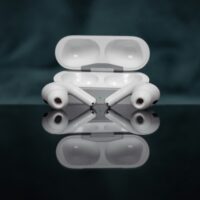Long before the convenience of digital pregnancy tests that give results in minutes, women relied on an extraordinary method of pregnancy detection involving an unlikely medical assistant: the humble frog. In the early 20th century, this seemingly bizarre approach revolutionized reproductive healthcare and provided the first scientifically reliable way to confirm pregnancy.
The Unexpected Medical Hero
In the 1930s, a groundbreaking discovery by British zoologist Lancelot Hogben transformed how pregnancy was detected. He found that female African clawed frogs (Xenopus laevis) possessed an extraordinary biological response to human pregnancy hormones. When injected with urine from a pregnant woman, these frogs would lay eggs within hours – a simple yet revolutionary diagnostic method.
The magic behind this process centered on human chorionic gonadotropin (hCG), a hormone produced during pregnancy. This hormone acted like a biological trigger, causing female frogs to ovulate almost immediately when present in a urine sample.
Why Frogs Made Perfect Test Subjects
The African clawed frog wasn’t just randomly selected. These amphibians came with a unique set of characteristics that made them ideal for medical testing:
- Remarkable Hormone Sensitivity: Extremely responsive to hormonal changes
- Durability: Could survive repeated testing
- Easy Maintenance: Thrived in laboratory conditions
- Consistent Responses: Provided reliable and reproducible results
- Low Cost: Cheaper to maintain than more complex laboratory animals
The Testing Process: From Urine to Eggs
Imagine a typical pregnancy test scenario in the mid-20th century: A woman would provide a urine sample to her doctor, who would then carefully inject it into a female frog. Laboratories would then monitor the frogs overnight. If eggs appeared, it signaled a positive pregnancy test.
The entire process took less than 24 hours – a remarkable achievement for medical diagnostics of that era. Hospitals and clinics maintained special “frog colonies” specifically for this purpose, with carefully controlled aquarium environments.
Global Impact and Popularity
By the 1950s, the “frog test” had become a standard medical procedure worldwide. Hospitals in Europe and the United States routinely used this method, appreciating its accuracy and simplicity compared to previous testing techniques that often involved sacrificing animals.
The test was particularly revolutionary because it:
- Provided early pregnancy confirmation
- Required only a simple urine sample
- Offered nearly 98% accuracy
- Could be performed relatively quickly
The Transition to Modern Testing
As scientific technology advanced, the frog test gradually gave way to more sophisticated methods. The 1960s and 1970s saw the development of biochemical pregnancy tests using antibodies, which could detect pregnancy hormones without requiring live animal subjects.
By the late 1970s, home pregnancy tests emerged, allowing women to confirm pregnancy privately and instantly. These new tests built directly upon the foundational scientific principles discovered through the frog test.
A Fascinating Chapter in Medical History
Today, the frog pregnancy test might seem like an amusing historical footnote. However, it represents a crucial milestone in medical diagnostics – a testament to human creativity and scientific innovation.
The story of the Xenopus frog test reminds us that scientific breakthroughs often come from unexpected places. What seems strange or impossible today might become tomorrow’s standard medical practice.
The Lasting Legacy
While frogs are no longer used for pregnancy testing, their contribution to medical science remains significant. The fundamental principle they helped establish – detecting specific hormones to confirm biological conditions – continues to be a cornerstone of modern diagnostic techniques.
From a quirky laboratory experiment to a global medical procedure, the frog pregnancy test stands as a remarkable example of how scientific curiosity and innovative thinking can transform healthcare.
A tribute to the little frogs that helped millions of women confirm their pregnancies











